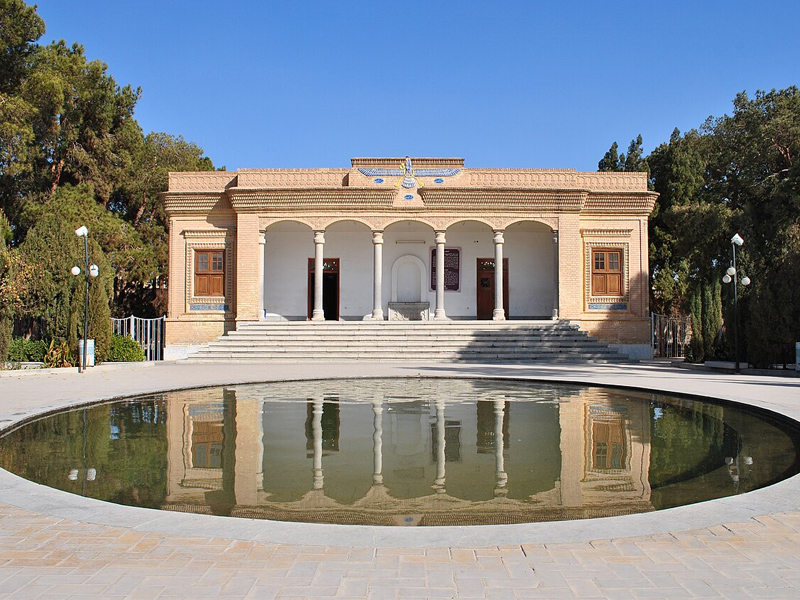The Yazd Fire Temple, also known as Atashkadeh-e Yazd, holds great historical and cultural significance in Iran. Located in the city of Yazd, this Zoroastrian temple is one of the oldest and most revered fire temples in the country. You may already know that fire temples have been among the religious and local structures for Zoroastrians from the past until now. These are places where fire is placed in a special location due to its purity and warmth, and the most important Zoroastrian rituals take place in front of the sacred fire.
Today, besides preserving their position among the people as they did in the past, some of these fire temples have become attractive tourist destinations and landmarks due to their unique architecture and structure.
Book Iran Air flights from London to Tehran and Tehran to London with Eligasht UK:
Iranian Fire Temples
Tehran Fire Temple, Yazd Fire Temple, Isfahan Fire Temple, Neyshabur Fire Temple, and some others are examples of these historical and religious structures in Iran that attract the attention of tourists. Among these, Yazd’s Bahram Fire Temple is one of the most famous fire temples in Iran, and today we intend to introduce it in this article. According to some sources, the fire in this temple has been burning continuously for about 1500 years. Stay with us in this article from the Eligasht website to get more familiar with this beautiful and remarkable place.
Book a hotel room in Tehran with Eligasht website
A Glimpse into Zoroastrianism
Before we explore the Yazd Fire Temple, it is essential to understand the significance of Zoroastrianism, the ancient religion associated with the temple. Zoroastrianism, founded by the prophet Zoroaster (or Zarathustra) around the 6th century BCE, is one of the oldest known monotheistic religions in the world. It emphasizes the worship of Ahura Mazda, the supreme deity, and promotes principles such as good thoughts, good words, and good deeds.
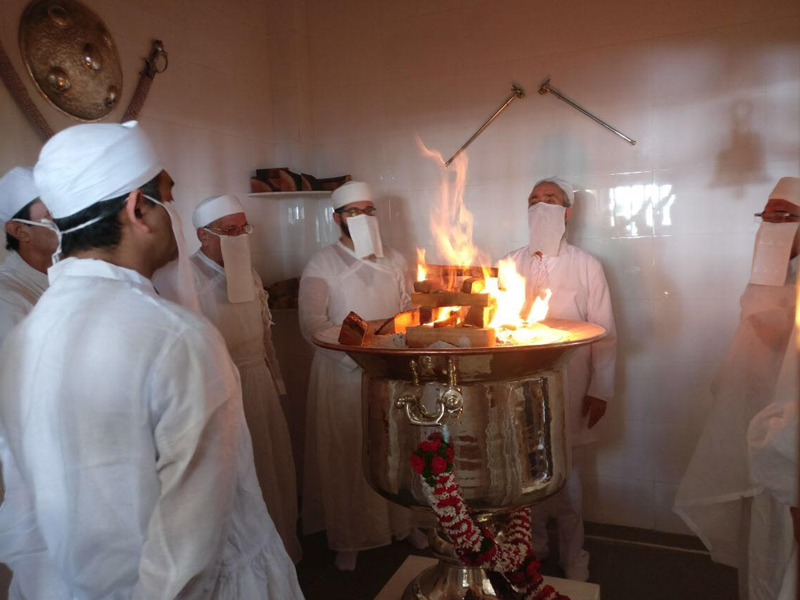
Location of Yazd Fire Temple
It is best to provide you with information about the location of Yazd Bahram Fire Temple. As the name suggests, this fire temple is located in Yazd City. To visit this unique attraction, you need to go to Montazerqaem Boulevard in Yazd. Follow the route towards Ayatollah Kashani Street to see the facade of this beautiful structure. It is worth mentioning that Ayatollah Kashani Street is one of the main streets in Yazd, and if you are unfamiliar with addresses and streets, there is no need to worry because you can easily access them.
What has been recorded in history about the Yazd fire temple
The history of the Yazd Atashkadeh (Zoroastrian Fire Temple) is quite remarkable. As mentioned earlier, some sources believe that its fire has been burning for nearly 1500 years without being extinguished. According to the writings in the Zoroastrian books, some Zoroastrian priests, who had been scattered and displaced due to the Mongol invasion, settled in a village called Torkabad after the Ilkhanate government was established. They placed the sacred fire, known as Atash Bahram, which had gone through many stories and events, in a nearby village. Later, the villages of Torkabad and its neighboring village, called Sharifabad, became the most important gathering centers of Zoroastrians.
It is interesting to know that this fire was kindled during the Sassanian period by the command of the Mobad-e Mobadan (the highest-ranking Zoroastrian priest) and remained preserved over time. After enduring numerous events, it remained intact in its final destination and is still maintained in the same place to this day, being lit as the most sacred fire of Zoroastrians. Finally, it should be mentioned that the fire of this fire temple belongs to the fire of the Karian fire temple in Larestan, which was brought to Yazd in 852 AH (Solar Hijri) and preserved.
Yazd Fire Temple’s Architecture and Structure
Another point to note about the Yazd Atashkadeh is the construction and structure of this place. It is worth mentioning that the construction of the current building dates back to the Pahlavi period. The construction of the fire temple was funded by a Parsi Zoroastrian named Homabai in 1934 AH (Solar Hijri) on a dedicated plot of land. The design of the building was carried out by Parsi engineers, and Jamshid Amanat was entrusted with the supervision and oversight of its construction. Ultimately, it should be added that the Yazd Atashkadeh, which is now one of the attractions of Yazd, contains the oldest fire and signifies a profound connection between the Zoroastrian faith and Aryan culture.
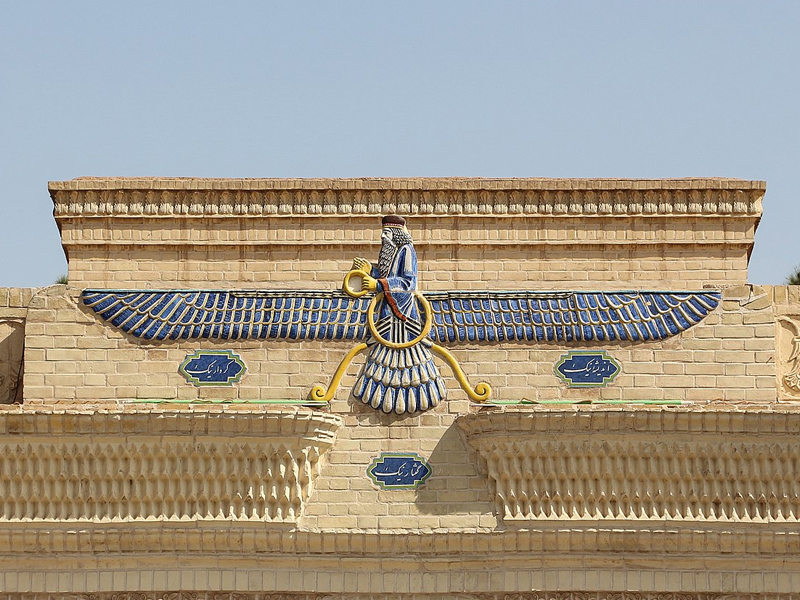
What the Architect has left behind in the Yazd fire temple
As mentioned, the design and architecture of the Bahram Yazd Atashkadeh were carried out by Parsi engineers. One important principle in the architecture of ancient fire temples is the simplicity of their design and construction, without ornamentation and extravagance. The main structure of this building, with a height of one meter and forty centimeters above ground level, was built in a green area filled with cypress and pine trees. Due to the presence of these cypress and pine trees, the surroundings of the main building are always green and enchanting. Alongside all these picturesque elements, the beauty of the Farvahar carvings and stone columns is mesmerizing and captivates the heart of any beholder. All of these attractions are located in the vicinity of a water basin within the fire temple compound.
Interesting Facts about the Yazd Atashkadeh
One interesting fact to know is that one of the characteristics of fire temples is their proximity to water. Another fact is that the flower-patterned stones at the base of the walls and the stone columns facing the main hall are the handiwork of Isfahani craftsmen. The stone carving was done in Isfahan and then transferred to Yazd. The tilework featuring the Farvahar motif that you see in the entrance arch is a remnant of the artistry of Yazdi tile craftsmen. Overall, it can be said that the architectural elements of this building draw inspiration from the architecture of Persian fire temples.
Alternate Name: Atashkadeh Yazd
It may seem a bit strange, but in this section, you will read about some points and information that have been mentioned in previous sections. Atashkadeh Bahram Yazd is also known among people as Atashkadeh Warhorām, where the sacred fire of Warhorām is preserved, and its maintenance is entrusted to a reliable and trusted person. There are special conditions for keeping the Warhorām fire burning, and these conditions are provided with the help of a person named Hirbod. Throughout the day, Hirbod takes care of the fire several times and prevents it from extinguishing by using dry pieces of wood made from yellow plum and almond trees.
The sacred fire of Warhorām is placed inside a room in the center of the building, away from sunlight and at a higher level than the ground. Rooms around it are designated for performing Zoroastrian rituals.
Atashkadeh Yazd in the List of National Heritage of Iran
In 1378 (1999/2000), despite the opposition of some Zoroastrians, the Yazd fire temple was registered in the List of National Heritage of Iran. The objections were based on the belief that the entry of tourists to this place would disturb the tranquility and cleanliness of the site. It is interesting to note that, in terms of history, culture, and architecture, Atashkadeh Yazd has been and still is attractive and inspiring to many people.
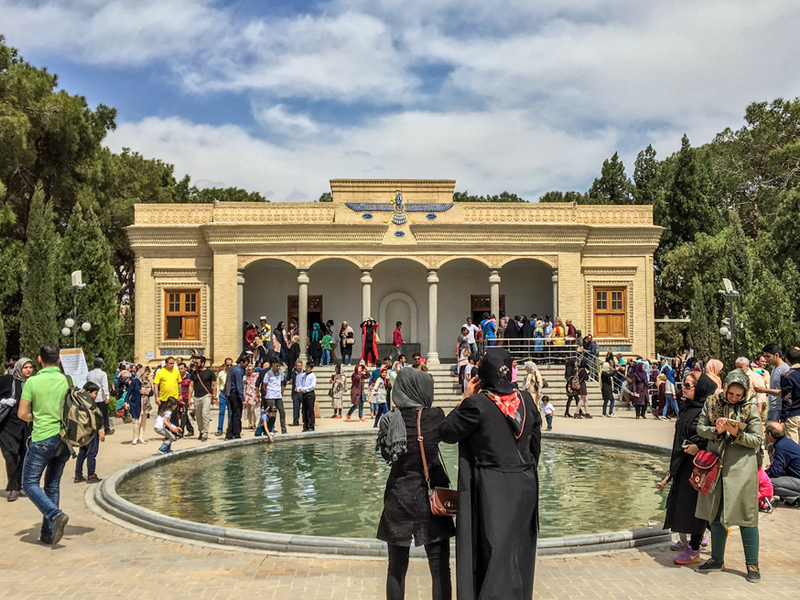
Religious Significance
The Yazd Fire Temple holds immense religious significance for Zoroastrians around the world. The sacred fire represents the eternal flame that burns within every believer’s heart, symbolizing the divine presence of Ahura Mazda. Zoroastrians consider fire as a purifying element and believe that it wards off evil spirits and cleanses impurities. The fire in the Yazd Fire Temple is regarded as the oldest and most sacred fire in Iran, attracting Zoroastrians from all corners of the globe.
Attractions of Atashkadeh Yazd
Vardjavand Hall and the Water Storage of Fire Temple are other parts of Atashkadeh Yazd that you can visit.
It should be noted that the fire temple is divided into two main sections: Vardjavand Hall and the location of the sacred fire. Another interesting point to mention is that for a long time, this fire was kept hidden in a cave by a group of Mobads until during the reign of Reza Shah Pahlavi, the construction of Atashkadeh and a place for the placement of the fire and Zoroastrian rituals were established.
Inside the temple, visitors can find the central chamber where the sacred fire is kept. The fire is housed in a special vessel known as an “Atashgah.” Surrounding the fire, there are prayer rooms and halls for Zoroastrians to gather and worship. The temple’s design and layout create a serene and peaceful atmosphere, inviting visitors to reflect and connect with the spiritual essence of Zoroastrianism.
Tips for Visiting Atashkadeh Yazd
Visiting this building, as well as the customs, the method of preservation, and the continuous burning of the fire are very interesting and worth seeing. However, it should be noted that you cannot enter the room where the fire is kept, and you can only observe Hirbod and the activities he performs to keep the fire burning through the glass.
In addition to all of these, you can also visit an exhibition recently set up in the vicinity of Atashkadeh to learn more about Zoroastrianism and purchase some items and souvenirs. The entrance to Atashkadeh Yazd is open for visits on all days of the week except holidays, and by purchasing a ticket, which costs around 5,000 Tomans for domestic tourists and 15,000 Tomans for foreign tourists, you can explore its various sections. Wearing white clothes, and observing cleanliness and hygiene are among the etiquette and tips that it is better to keep in mind and follow when visiting Atashkadeh.
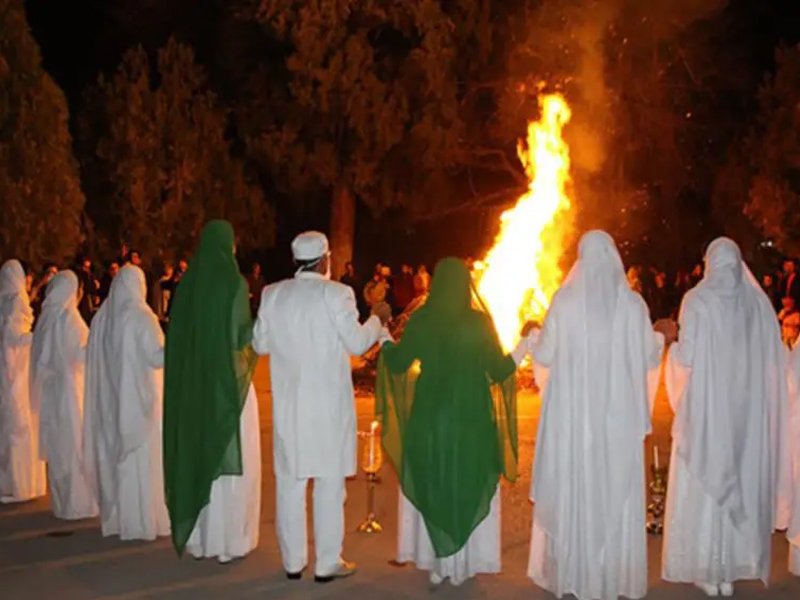
Access and Visiting Information
Address: Kashani Street, Yazd City, Yazd Province
Visitors should enter the fire temple from the western entrance.
Visiting Hours:
- First six months of the year: 8:00 to 11:45 and 16:00 to 19:45
- Second six months of the year: 8:00 to 11:45 and 15:00 to 18:45
Closed on Fridays.
Final words
The Yazd Fire Temple stands as a testament to the rich history and cultural heritage of Zoroastrianism in Iran. Its sacred fire, ancient architecture, and religious significance make it a must-visit destination for those interested in exploring the roots of this ancient faith. By preserving and cherishing the Yazd Fire Temple, we can honor the traditions and beliefs of Zoroastrians and gain a deeper appreciation for their contributions to the world’s religious tapestry.
FAQ
1.What is the significance of the sacred fire in the Yazd Fire Temple?
The sacred fire in the Yazd Fire Temple holds great importance in Zoroastrianism. It represents the eternal flame that burns within every believer’s heart and symbolizes the divine presence of Ahura Mazda. Zoroastrians consider fire as a purifying element that wards off evil spirits and cleanses impurities.
2.How old is the fire in the Yazd Fire Temple?
The fire in the Yazd Fire Temple has been continuously burning for over 1,500 years, making it one of the oldest continuously burning fires in the world. Its longevity serves as a testament to the deep reverence and commitment of the Zoroastrian community.
3.Can non-Zoroastrians visit the Yazd Fire Temple?
Yes, the Yazd Fire Temple is open to visitors from all backgrounds. However, it is essential to show respect and follow the guidelines set by the temple authorities. Visitors are expected to remove their shoes before entering the temple and dress modestly as a sign of reverence.
